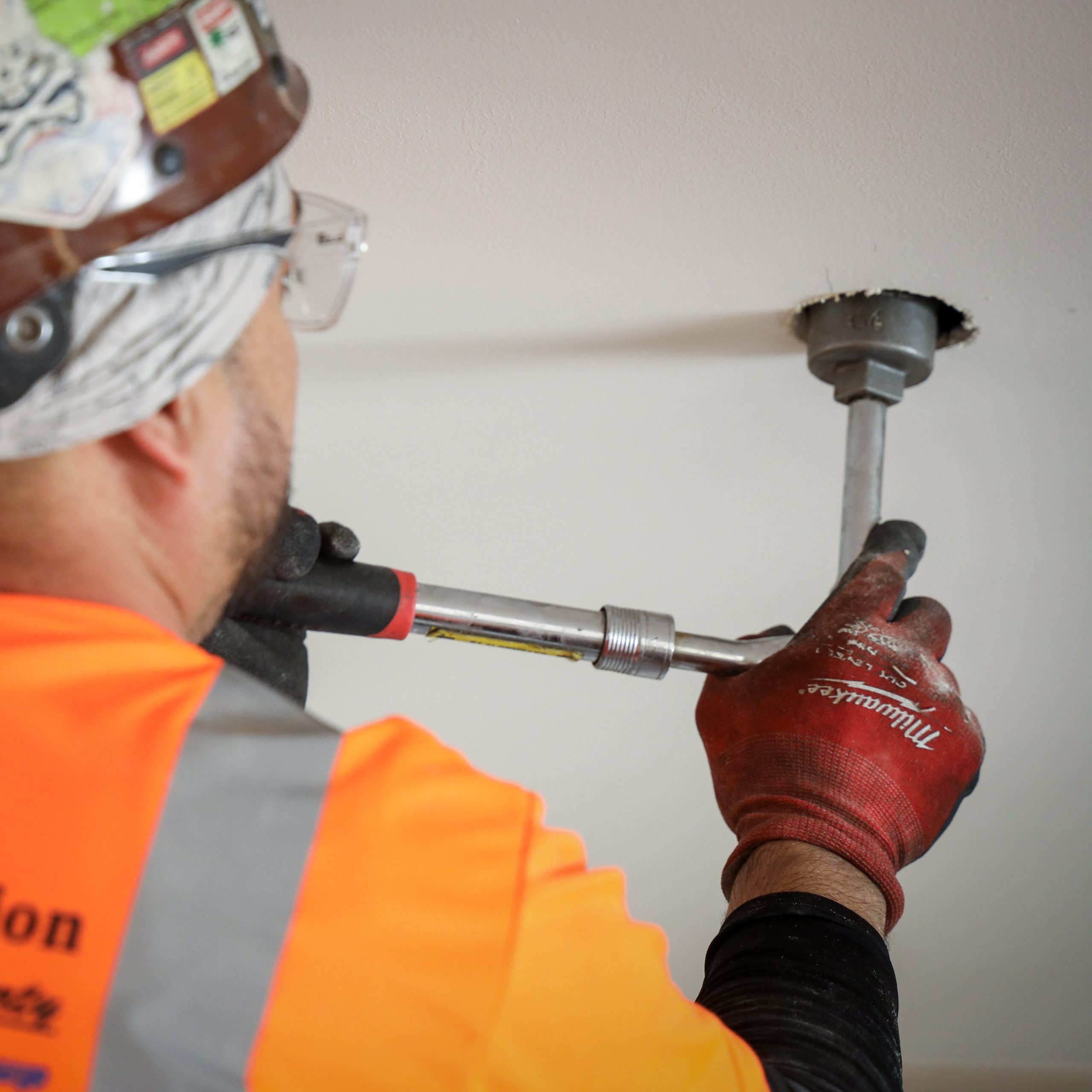4 Types of Fire Sprinklers
There are many types of fire sprinkler systems that are available for your building. Whether you have a retail building, a high hazard industrial facility, or a warehouse, you can find a sprinkler system that works well for your application.
Traditional Fire Sprinklers
Traditional fire sprinklers are the most common form of fire sprinklers. It is a wet pipe system, meaning the system’s pipe are filled with pressurized water. When the system activates, the sprinkler head nearest the fire will activate, discharging water onto the flames. This is the simplest form of fire sprinkler. It is used in most applications because it is the most inexpensive option while also being very effective.
Dry Pipe Sprinkler Systems
In contrast to traditional sprinkler systems, dry pipe sprinklers do not have water in the sprinkler pipes. Instead, the pipes are filled with pressurized air or nitrogen. When the sprinkler system activates, water will fill the pipes and then be discharges onto the flames. These systems are used in cold, unheated areas where water could freeze.
Pre-action Sprinkler Systems
In areas where accidental discharge of the sprinkler system could cause irreparable damage, a pre-action sprinkler system is used. These systems are a form of dry pipe sprinklers that require a two-step process to activate. First, a fire is detected, and the pre-action valve opens, allowing water into the pipes. Then, each sprinkler head is individually activated to allow water to be released.
Deluge Fire Sprinklers
Deluge sprinkler systems are used in high hazard applications. In these systems, the pipes contain unpressurized air, making it a dry pipe system. The sprinkler heads are always open and when a fire is detected, a deluge valve opens and allows water to be released to all the open sprinkler heads. This creates at total flood which puts out a fire quickly and effectively.
WSFP Does Fire Sprinklers
At Western States Fire Protection, we design, install, inspect, test and service many types of fire sprinkler systems. We can install traditional fire sprinklers, dry pipe systems, pre-action sprinklers, and deluge sprinklers. Our team is experienced and qualified to design a sprinkler system that fits the needs of your facility while remaining in compliance with local and NFPA standards. We also provide ongoing, inspections and service for your systems. If you have an emergency with your fire protection system, we have technicians who will respond to your situation 24 hours a day, 7 days a week.
Contact us today to learn more about our fire sprinkler systems!
